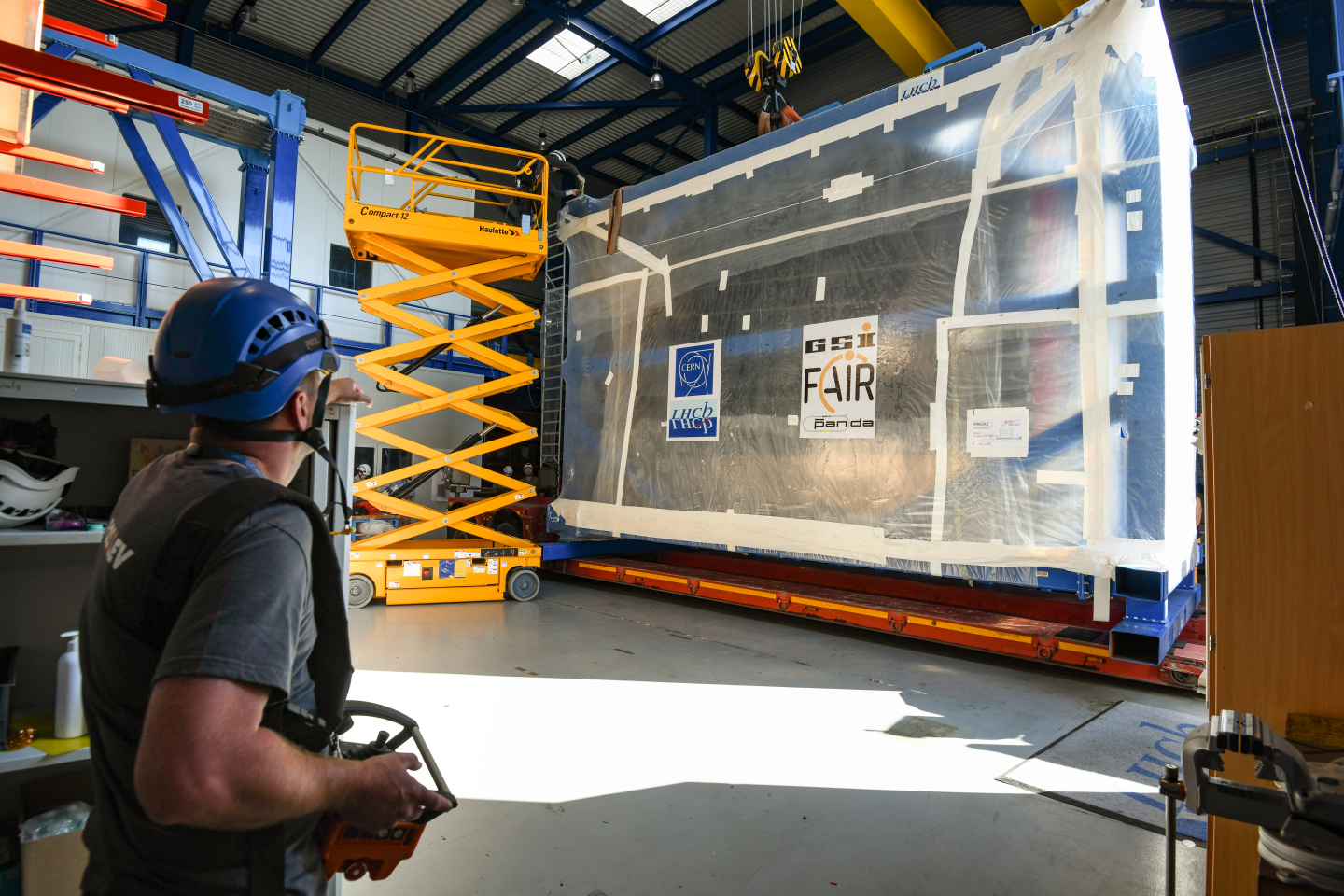Located near Geneva airport, the LHCb experiment is one of the four big experiments at CERN’s Large Hadron Collider (LHC). Dedicated to the study of b-quarks, LHCb uses a set of successive detectors to study the traces of the particles thrown forward from the collision point. One of these detectors is the outer tracker, which was replaced during Long Shutdown 2 by a new set-up based on scintillating fibres, the SciFi. The latter comes with a more refined granularity, allowing for a higher spatial resolution of the tracked particles.
The outer tracker was still in good shape and working perfectly, despite having been in operation for a decade. Therefore, after discussing the spare detector module at a conference with colleagues from the GSI Helmholtzzentrum für Schwerionenforschung, the LHCb collaboration decided to donate it to the PANDA (antiProton ANnihilation at DArmstadt) experiment, which will be hosted by FAIR – the Facility for Antiproton and Ion Research – currently under construction at GSI.
At PANDA, the outer tracker will partly go back to resume its initial function of tracing the smallest building blocks of matter. With the aid of the FAIR accelerators, antiproton beams will be generated and stored, then collided with fixed targets (e.g. hydrogen) inside the PANDA detector set-up. As this will happen at lower energies, the outer tracker will be able to detect the light hadrons produced by the collisions. Hadron spectroscopy is where the physics goals of LHCb and PANDA overlap, and the two will be able to collect complementary data that can later be analysed and compared. The tracker will also be used by students and young researchers in R&D projects, as well as in outreach activities for schools and the general public.
Transporting the tracker was no easy feat: In its transport frame, it is seven metres long, 3.5 metres wide and 5.5 metres high. It also weighs 24 tons. In 2018, when the disassembly started, the whole outer tracker was demounted placed in its transport frame – a specially designed handling cage – and removed from the LHCb cavern. Subsequently, it was moved to a storage hall within CERN, and more recently to Sergy, France for the release procedures and finally back to LHCb in Meyrin, Switzerland, where it was prepared for shipping. Hoisted up by cranes onto a truck, the detector began its journey from CERN to GSI/FAIR. Near Colmar, France, it was loaded onto a ship for a multi-day journey up the Rhine river. At Gernsheim, Germany, another truck collected the tracker and brought it safely to GSI/FAIR in Darmstadt where it will start its second life. Read more on the LHCb website here.


(Credit: Piotr Traczyk)
The donation was made possible thanks to the close cooperation in logistics and technical aspects between several colleagues at CERN and GSI/FAIR, in particular Niels Tuning (LHCb, Nikhef/CERN) and Anastasios Belias (PANDA, GSI/FAIR) and their relentless efforts to give the formidable outer tracker a second life. The donation was kindly agreed upon by the LHCb groups who meticulously built and operated the outer tracker, namely,
- the National Institute for Subatomic Physics, Nikhef, the Netherlands,
- the Physikalisches Institut der Universität Heidelberg, Germany,
- the National Centre for Nuclear Research, Warsaw, Poland,
- the Henryk Niewodniczanski Institute of Nuclear Physics, Polish Academy of Sciences, Krakow, Poland,
- and the Technische Universität Dortmund, Germany.

